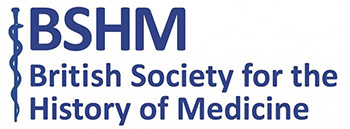
In this centenary year there have been several new books, articles and television programmes about the pandemic which killed between 50 and 100 million people worldwide. Much of this writing, however, has been very America-centric, and has ignored the influenza that had been spreading in Europe from the autumn of 1916. Although this version of influenza had a low penetrance, it had a high mortality due to the fact that 25% suffered what we now know to be a cytokine storm, so 20% died a very unpleasant death. At the time it was not known what was happening – was it an infection, or some new poison gas produced by the other side? Amongst the British it almost exclusively affected soldiers, but when they discovered that German and Austrian soldiers and civilians were badly affected, the conspiratory theory was discarded. In UK there was a small outbreak in Aldershot, but it did not spread. The bacteriologists could find no common organism and labelled it “purulent bronchitis”. It was not until the 1918 pandemic, when it was noted that survivors of purulent bronchitis were immune to the influenza, that they realised they were looking at the same disease. Sadly, no tissues or samples remain of this early manifestation.
By definition “Spanish” Flu started in the USA in March 1918. This behaved in quite the opposite way to the purulent bronchitis. The mortality of the first wave (March-early September) was no higher than normal influenza epidemics, but it was extremely infectious. In the worst week, in July 1918, 46,275 British soldiers in France reported sick – they nearly overwhelmed the medical system. It was during this time that the infection got its misnomer. The warring nations did not wish to give any information to the enemy that might suggest that they had an increased rate of sickness, but Spain, which was neutral, had no such compunction. This meant that our press was able to report an epidemic in Spain, and the name stuck. The incorrect fact that it had started in Spain was believed to such a degree that when exploring the National Archives in Malta I came across the draft of a telegram from the Governor to the British Ambassador in Madrid demanding medical information. This was sent in cypher.

National Archives of Malta, CSG 01 – 1033/1918
In September 1918 it appears that the two expressions of the influenza met and mutated in Étaples near Boulogne and created the deadly 2nd wave which caused a huge death rate as it still had the high penetrance of the American 1st wave, but about 10% suffered the haemorrhagic cytokine storms. The figures are frightening. 17 million died in India alone, Samoa lost 20% of its population. In London 13,000 died of influenza (in 1912 the influenza deaths has been 535).
It must have been a horrendous time to be a doctor, struggling to understand why so many previously healthy young people were dying, and struggling to find places to nurse them. Many factory buildings had to be converted into makeshift hospitals. Let us all pray that we are able to contain the next severe pandemic.
Jane Orr




